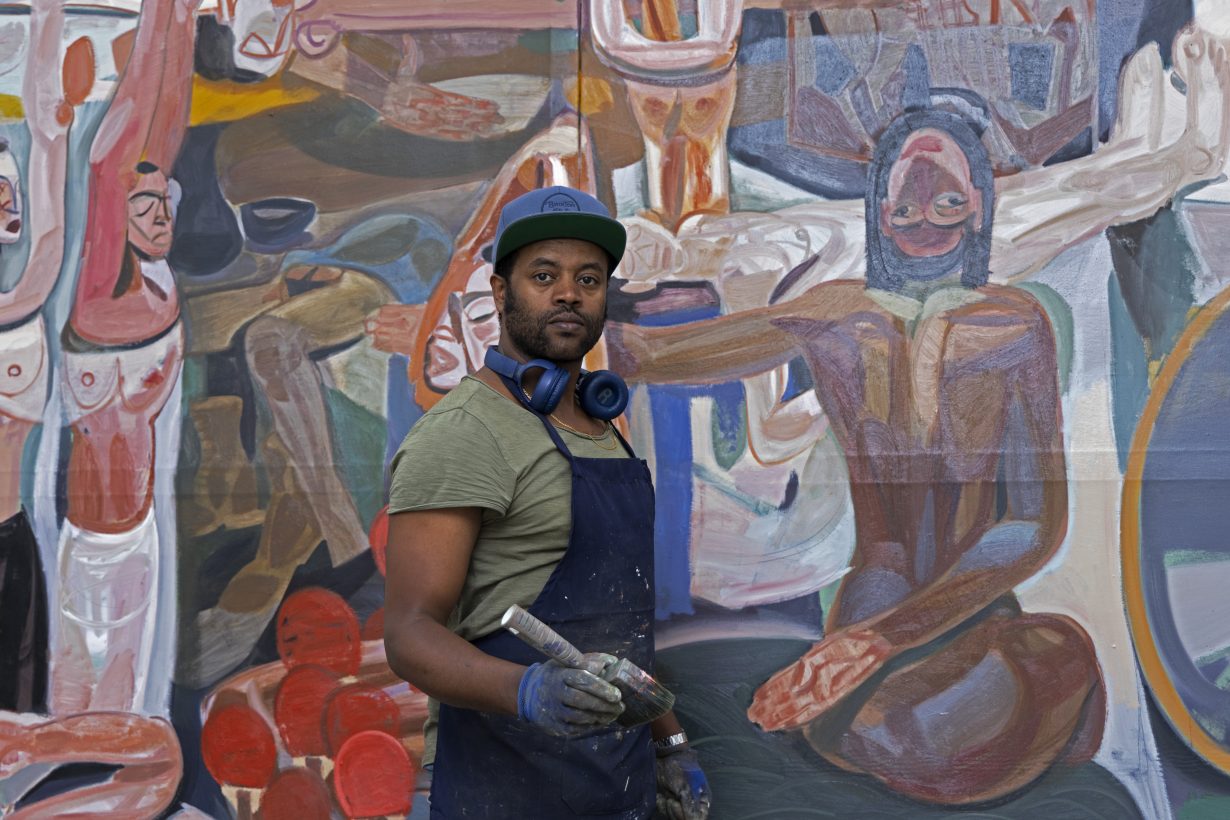ArtReview sent a questionnaire to artists and curators exhibiting in and curating the various national pavilions of the 2024 Venice Biennale, the responses to which will be published daily in the leadup to and during the Venice Biennale, which runs from 20 April to 24 November.
Tesfaye Urgessa is representing Ethiopia; the pavilion is in Palazzo Bollani.

ArtReview What do you think of when you think of Venice?
Tesfaye Urgessa The past, human craziness and determination, and beauty.
AR What can you tell us about your exhibition plans for Venice?
TU The title of the exhibition is Prejudice and Belonging, and predominantly features large-format oil paintings. While the theme of the biennale Foreigners Everywhere isn’t new to me, having explored it in my previous artwork, I felt compelled to delve deeper into the issue. My aim is to create a group of figures engaged in unknown activities, intentionally leaving the situation ambiguous to the viewer. This approach aims to immerse the viewer in an intimate space that feels familiar to the figures depicted but foreign to the viewer, as if they’d entered a strange realm in which they are being observed. I intend to evoke a sense of being scrutinised and potentially judged in the minds of viewers. By creating an atmosphere where the audience feels under scrutiny, I hope to prompt introspection and reflection on the nature of perception and judgment. My intention is to encourage viewers to confront their own biases and prejudices as they engage with my artwork.
AR Why is the Venice Biennale still important, if at all? And what is the importance of showing there? Is it about visibility, inclusion, acknowledgment?
TU Nowadays, there are plenty of international art fairs, but the Venice Biennale stands out for a few reasons. It has the longest history, a distinct structure with pavilions and its various collateral events, and lasts over half a year. This extended duration allows more people to visit at their convenience, unlike typical art fairs. Because of the large number of visitors it attracts, artists get more exposure and communication opportunities, whether they’re representing a country or taking part in collateral events. So it does boosts visibility inclusion, and acknowledgement for both artists and their countries, ultimately leading to broader communication possibilities.
AR When you make artworks do you have a specific audience in mind?
TU When dealing with social, racial and political issues, there’s often no alternative but to address them directly. However, I don’t usually create a painting for a specific group. Instead, I may have different audiences in mind as I’m working on different parts of the same painting, particularly when the artwork addresses current racial issues and injustices. Often the same painting can either condemn or comfort depending who the audience is.
AR Do you think there is such a thing as national art? Or is all art universal? Is there something that defines your nation’s artistic traditions? And what is misunderstood or forgotten about your nation’s art history?
TU The answer is both. Art can have national origins based on where it was first practiced, but it also possesses a universal appeal transcending borders, accessible to artists and audiences worldwide. But it is very hard to have that nowadays since the internet and other communication media are erasing geographical boundaries.
Ethiopian traditional painting found in numerous churches and monasteries can be regarded as a national art form in Ethiopia since it has endured the longest. Yet, it’s essential to recognise that art existed in Ethiopia before the spread of Christianity, even if many of those works haven’t survived.
I would choose to focus on the present rather than going into the past to answer the last question. I believe it’s crucial not to overlook what’s happening now, as it represents the most captivating and groundbreaking movement occurring in the country’s art history.
AR If someone were to visit your nation, what three things would you recommend they see or read in order to understand it better?
TU Get to know the people – they’re the heart and soul of the country.
Visit the historical locations, read about the country’s history, and you will be astounded by what you might learn.
Drink lots of coffee.
AR Which other artists have influenced or inspired you?
TU Bisrat Shibabaw, Mezgebu Tessema, Lucian Freud, Caravaggio, Philip Guston, and many others.
AR What, other than your own work, are you looking forward to seeing while you are in Venice?
TU All the other works.
The 60th Venice Biennale, 20 April – 24 November